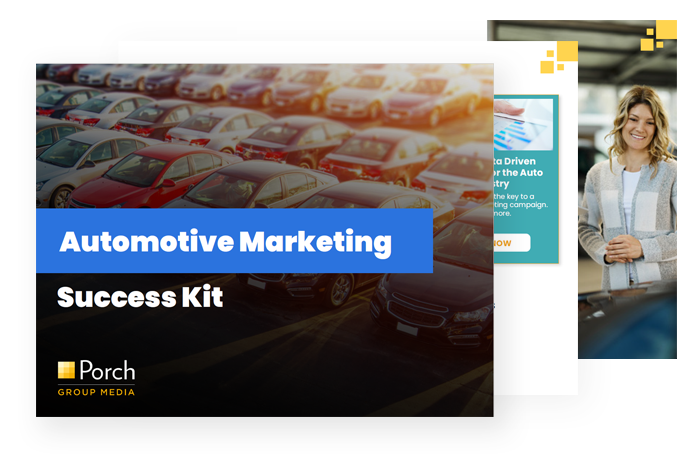It’s the age old question of, “What came first, the chicken or the egg?” Except now the question is, “What came first, the connected car or the connected consumer?” Some argue that consumers are evolving as a reaction to the evolution of technology. That after becoming accustomed to having the world at our fingertips we started to expect it in every facet of our lives. Or perhaps our expectations evolved first due to sci-fi novels and futuristic TV shows and the auto industry was forced to keep up.
Either way, today’s car and consumer are both more connected than ever before. The line between a vehicle and a computer is becoming blurrier and consumer expectations are on the rise. As connected cars become the future of the automotive industry, dealers must learn how to attract, and retain, this new breed of customer.
1. Content, Content, Content
The connected consumer consumes media more often than ever before, through different channels, and often at the same time. Even mediums that were once considered “traditional” have gone digital. The JD Power U.S. Automotive Media and Marketing Report found that consumers interested in purchasing new vehicles based on their technological value were more likely to read a magazine through an app, and Google research found that 77% of the time viewers watch TV it’s with another device.
The same study found that 90% of car shoppers begin their research online and often via a mobile device. Most dealers are taking notice, as $1 Billion was spent on display ads alone in 2013. Dealers are even spending 44% more than manufacturers on paid searches. Total digital advertising is expected to hit $12 billion by 2019, a sum that’s only second to the retail industry. But what about the small dealership that is afraid to allocate too much spending to uncharted territory? It’s all about the content.

The auto buyer’s journey is not linear, nor is it a funnel; it’s fluid and ever-changing process of research and interactions that happen before the customer steps onto the lot.
Publishing blogs about new car types and features (with subtle reminders that they’re available for test drive at your location), or posting interactive videos of cars that just hit the lot are great ways to produce web traffic without an increase in spending.
And with that traffic comes valuable consumer data that can be mined and turned into actionable insights for your next marketing campaign. Collecting data on which content is getting the most hits, likes shares, etc. (and by whom) allows dealers to get a more comprehensive view of consumers for highly targeted offers.
Example: IP Address 12.34.576.8 has visited your website 3 times in the past week, clicked (and spent time on ) 4 blog pages, and reviewed your current listed inventory. With this information, you can append contact information to the IP address to learn that the IP address is assigned to Jane Smith who lives at 334 Bluejay Lane, with an income of $60,000+ per year, and she currently drives a sporty convertible.
You can also add in-market shopping indicators to target shoppers who are browsing for new vehicles, safety features, or best cars for new teen drivers as examples.
2. Interactivity is a must
In the JD Power study, 43% of premium brand drivers and 28% of non-premium brand drivers cite their vehicle’s latest technology features as one of the reasons they purchased their vehicle. But technology is not only a requirement of their cars, but it’s a part of their lifestyle.
Connected consumers go online more on tablets (54%) and phones (69%) than non-connected consumers, and by 2020 80% of consumers are expected to shop for vehicles across multiple devices. Accenture found that 75% of connected consumers would even consider conducting the entire purchase process online. This development is a reflection of the new-age, “always-on” lifestyle.
Consumers don’t have time to wait around or waste time, they decide what they want and then they want it now. To stay competitive, offering online scheduling of service appointments or test drives is no longer an option – it’s a necessity. The connected consumer wants convenience to be a click away, or they’ll find a competitor who can give it to them.
Industries across the board are facing this reality, as more and more customer experience and omnichannel capabilities are becoming major product differentiating factors.
Not only on your website, but more than half of JD Power respondents also said they would be interested in a more digitally interactive experience at the dealership and 48% would consider a virtual test drive. Dealers who are excelling in “offline” customer service need to take that same devotion to customer convenience online with interactive websites and simple scheduling services by internet, mobile device, or even text message.

3. Personalized experiences make a difference
Connected consumers are used to seamless, omnichannel experiences and relevant offers. If your dealership or service center fails to deliver, it will be bad news for both acquiring newly connected customers and retaining current customers who are looking for a more optimized customer experience. According to a study by Walker, the customer experience is so important, it is expected to overtake price and product as the key competitive differentiator. A single transaction has the potential to turn into a lifetime relationship if you steward your customers properly.
Take steps to get your databases in order- cleansed and integrated into one central system. This will help avoid mishaps like bounced back direct mails or misspelled names on emails. Work with a provider to develop a comprehensive customer view.
This will help you to send only the most relevant offers to current clients and prospects – which is something they’ll appreciate.
We still have the luxury of differentiating “connected customers” from “regular customers,” but this won’t last for long. Soon the tactics to attract the modern consumer will be the only way to attract or retain customers at all, and automotive companies can’t waste any more time implementing a plan for when that day comes.


